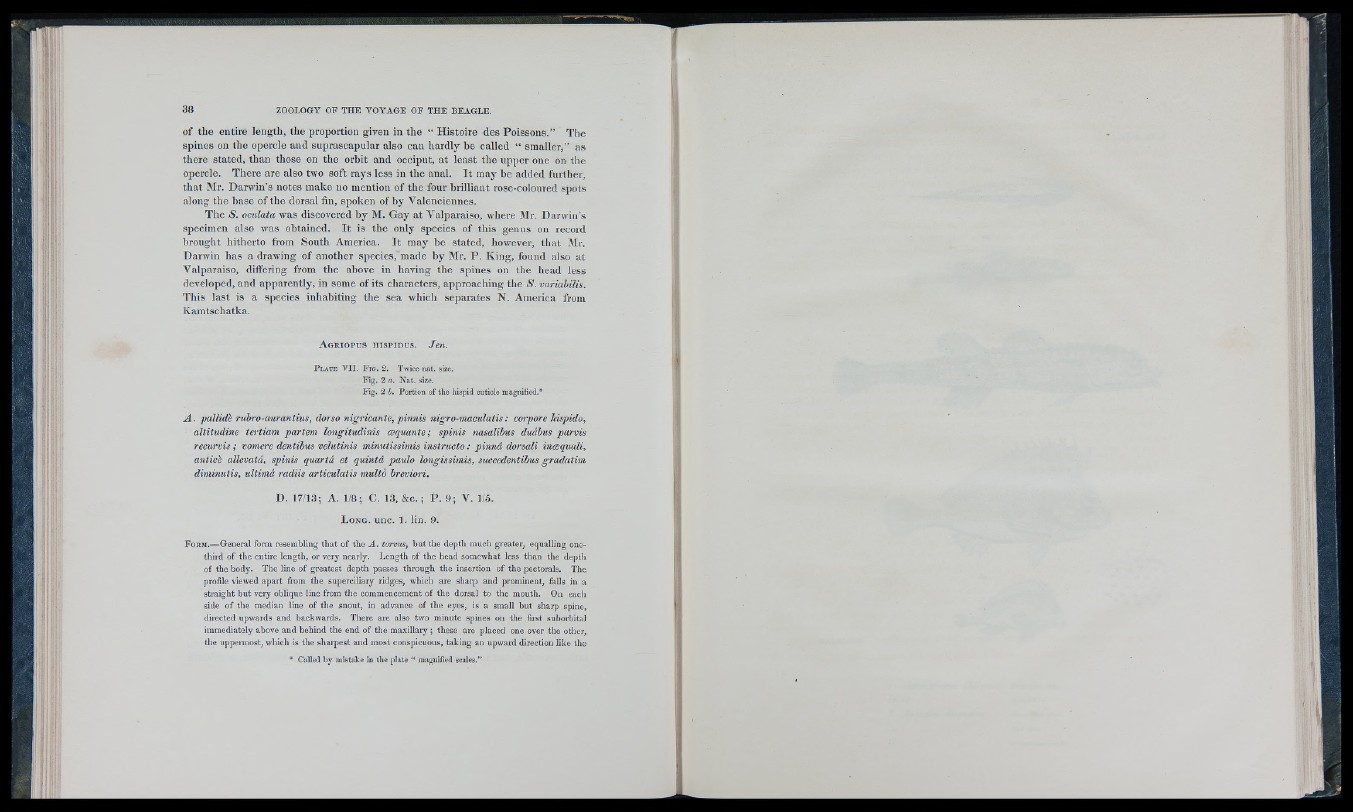
of the entire length, the proportion given in the “ Histoire des Poissons.” The
spines on the opercle and suprascapular also can hardly be called “ smaller,” as
there stated, than those on the orbit and occiput, at least the upper one on the
opercle. There are also two soft rays less in the anal. It may be added further,
that Mr. Darwin’s notes make no mention of the four brilliant rose-coloured spots
along the base of the dorsal fin, spoken of by Valenciennes.
The S. oculata was discovered by M. Gay at Valparaiso, where Mr. Darwin’s
specimen also was obtained. It is the only species of this genus on record
brought hitherto from South America. It may be stated, however, that Mr.
Darwin has a drawing of another species, made by Mr. P . King, found also at
Valparaiso, differing from the above in having the spines on the head less
developed, and apparently, in some of its characters, approaching the S. variahilis.
This last is a species inhabiting the sea which separates N. America from
Kamtschatka.
A g r io p u s h is p id u s . Jen.
P late V II. F ig . 2. Tw ice nat. size.
F ig. 2 a. N a t. size.
F ig. 2 h. P ortion of the hispid cuticle magnified.*
A . pallidè rubro-aurantius, dorso nigricante, pinnis nigro-maculatis : corpore hispido,
altitudine tertiam partem longitudinis acquante; spinis nasalibus duabus paixis
recurvis ; vomere dentibus velutinis minutissimis instructo : pinna dorsali incequali,
anticè allevata, spinis quarta et quinta paulo longissimis, succedentibus gradatim
diminutis, ultimà radiis articulatis multò breviori.
D . 17/13; A. 1/8; C. 13, &c. ; P . 9; V. 1/5.
L o n g . u n c . 1. lin . 9.
F o rm .— General form resembling that of the A . torvus, b u t the depth much greater, equalling one-
third of the entire length, or very nearly. Length of the head somewhat less than the depth
o f the body. The line of greatest depth passes through the insertion of the pectorals. The
profile viewed apart from the superciliary ridges, which are sharp and prominent, falls in a
straight but very oblique line from the commencement of the dorsal to the mouth. O n each
side o f the median line o f the snout, in advance of the eyes, is a small but shaip spine,
directed upwards and backwards. Tliere are also two minute spines on the first suborbital
immediately above and behind the end of the m axillary; these are placed one over the other,
the uppermost, which is the sharpest and most conspicuous, taking an upward direction like the
* Called by mistake in the plate “ magnified scales.”